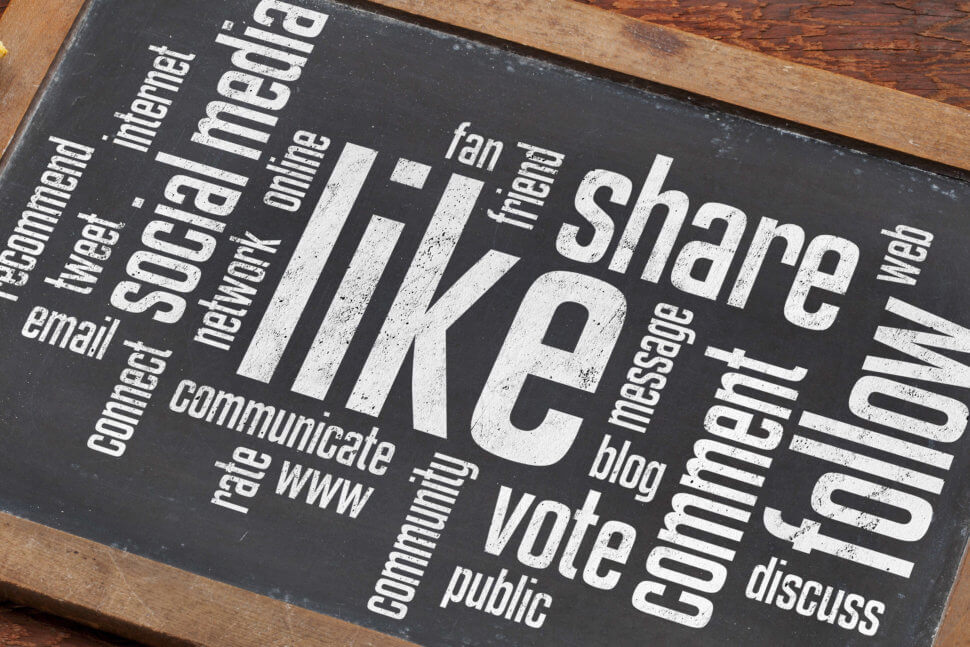Social Media is the new word of mouth. The power of social networking is such that the number of worldwide users has now reached 3.78 billion active social media users in 2021, which is around a third of the world’s entire population. Through these channels, your small business can reach a broader audience, gain valuable insights and show the human side to your brand.
As social media platforms like Facebook, Twitter, Instagram and LinkedIn have become mainstream, businesses have capitalised on the opportunity they provide to build awareness and drive sales. Social media can be an amazing mouthpiece for your brand and should now be an integral tool of your marketing strategy.
In this guide, we’ll look at the main platforms, why your small business should be on them and what to do on each.
Let’s start with some of the reasons why:
- Interactivity – On social media, you can build community in a way that TV, radio or newspapers can’t. If you share an article you have written on Facebook, for instance, your reader can comment, share and react. The short messaging app Twitter allows users to respond in real time to tweets made by other users like a conversation and photo sharing site, Instagram allows viewers to post comments.
- Improved Search Engine Rankings – Engaging posts can help drive more traffic to your website, increase your backlinks and build your authority ranking. If you publish content that gives people what they are looking for, they are more likely to link to you. Search engines view these links like a ‘positive vote’ in your favour.
- Help build your brand – Social Media can help to build your brand identity. You can also show more of your personality here or a ‘behind the scenes’ video of your business which deepens your relationship with your audience.
- Potential for viral marketing exposure: Your message is amplified when people interact with a ‘like’ a ‘retweet’ or a ‘share’. If you catch the imagination of your audience, the word can spread pretty rapidly.
- Reputation management: Your proactive engagement on social can enhance your business’s reputation for customer service. You can respond quickly to your customer’s questions and respond to comments, both positive and negative.
- Audience interaction: Your audience can add reviews and provide feedback or talk to you in real-time. This interaction brings the potential for adding new customers, it also allows you to nurture leads and generate valuable feedback about your products.
- Reduce overall marketing costs: While it can take some time invested, social media channels can be a very cost-effective way to get the word out. If you are using BOMA, you only design your message once and BOMA does the rest to reformat your post for the channels you choose. You can create campaigns in minutes whether it’s a tweet, an update on LinkedIn, a Facebook post or all of these.
- Targeted advertising through social media – Building a strong following takes time so it requires consistent effort to share useful content and build community. Paid advertising that specifically targets your customers is a great way to cut through and support your organic activity. You can target people based on location, demographics, interests, and age and easily measure the performance of your campaign.

What social media channel is best for my small business?
It is worth securing the accounts on the platforms you want to use, but you don’t necessarily need to be on all of them. Take some time to understand the platforms, where your target audience is and which suit you and your product best.
We’ve put together a short summary of the main platforms and how you can use them for your small business.
Facebook is first because it’s the biggest. There are a whopping 2.8 Billion Users Daily. Facebook started as a friend networking site but has quickly been a place for businesses to talk to customers in a less formal way than their website. In fact, 42% of marketers say Facebook is critical for their business. Facebook provides you with a non-selling environment – it’s all about personality, casual endorsement, being a proactive and responsive company. Here are some ideas:
- Post about the human side of your business with images of the team or an event you’ve held.
- Promote new products and major sales events.
- Share long-form content here with a link back to the article on your website.
- Advertising – Because Facebook is the biggest, it is also the busiest. Facebook’s algorithm now works to promote friend based connection over business so advertising is now a vitally important tool to achieve your marketing goals. There are lots of advertising strategies you can use to build awareness, drive traffic to your website or generate leads.
Twitter is strongest with millennials (18-29) and usage drops as age increases. Tweets are limited to 280 characters so they can be stand-alone comments about something topical or you can also use Twitter to introduce and link to a longer article you’ve written. If you are new to Twitter, it’s a great place to follow industry influencers and get a feel for what’s trending.
Here are some ideas:
- Share clever comments about something in the news.
- Introduce and link to a blog post you have written.
- Add an entertaining take on industry news.
LinkedIn is a virtual networking event. It’s like the business version of Facebook. The audience is slightly older (61% are 30-64 years old) and they have higher than average incomes.
On LinkedIn, you can make connections within or across industry and for this reason the channel is often used for job hunting. You can also have a page for your business so that your employees can link to it. LinkedIn is great for B2B businesses who want to establish their company as a thought leader or industry leader.
- Post longer form content here that provides a new take or perspective.
- Share posts that are written by others that provide something of value for your audience and introduce with your own comment.
This platform is mobile rather than desktop and it’s all about photos and videos that provide your viewers with a more personal connection with your brand. 90% of users are under 35 years old but their engagement with brands is high. This is a highly engaging platform when you use the right images. Food, travel, and fashion are perfect for Instagram but images don’t have to be product based, check out FedEx, IBM and HP’s beautiful photos.
Consider posting the following:
- Post beautiful product shots or images that align with your brand positioning.
- Use hashtags to index your posts and make them more searchable or discoverable.
- Post ‘real’ images that are more engaging and authentic than stock photography.
- Reach larger audiences with Instagram ad targeting.
Video sharing sites – YouTube, Vimeo and Vine
64% of consumers make a purchase after watching branded social videos. Video is a very powerful tool for marketing. These sites are great for storytelling, product demos and sharing useful information in a creative way.
YouTube – The most popular video hosting site, YouTube is free to use and is also the second largest search engine behind Google. Because of its popularity, it can be difficult to rank on this site so the more compelling, useful or entertaining, the better. It’s worth noting also that, YouTube keeps viewers on the channel by serving up another video to watch straight after yours, so this can make it harder to bring your audience back to your website.
Vimeo – Not as big as YouTube but has more specialised appeal so it can be a great place to reach your niche audience with great quality videos.
Vine – Vine is a mobile application for short creative videos. Using the in-app camera, users can record videos up to 6 seconds long. Vine is a popular place for comedy, music performance and journalists.
For video sharing sites, here are some pointers on what to post:
- Demonstrations on product use are great for video.
- Share a webinar or podcast.
- Use keywords in your video captions to help improve your visibility for people searching.
- Include a call to action at the end.
- Lots of people watch with the sound turned off so including captions can reinforce your message.
Similar to Instagram, Pinterest is all also about image sharing but the two platforms have different uses. Instagram is about sharing your own photos, whereas Pinterest is a place to discover, collect and curate other people’s images. So you will find more photos of people on Instagram and more products on Pinterest. In their own words ‘People use Pinterest for helpful, inspiring ideas, whether that’s dinner recipes, home renovation tips or the perfect pair of shoes’. 70% of pinners are female but 50% of new signs ups are now male.
Every pin has a link to the source of the image so you can use your irresistible images to drive traffic back to your website. Here are some ways to use the platform:
- Use keywords in your board titles to help people find you.
- Write short relevant descriptions for each image.
- Add links to your home page or more information on your website.
And there are even more social media channels….
Snapchat
Millennials love the Snapchat mobile app for sending photos, text, images, and drawings. Snapchat allows you to add filters like bunny ears or create crazy images by swapping your face with a friend and then sending it out like a text. Once they are sent, the messages disappear after a few seconds. Brands like Starbucks have successfully launched products in the platform by creating filters for ‘snapchatters’ to use and share with their friends.
TikTok
TikTok, known in China as Douyin, is a video-sharing social networking service owned by Chinese company ByteDance. The social media platform is used to make a variety of short-form videos, from genres like dance, comedy, and education, that have a duration from fifteen seconds to one minute. Video creators have all sorts of tools at their disposal: filters as on Snapchat (and later, everyone else); the ability to search for sounds to score your video. Users are also strongly encouraged to engage with other users, through “response” videos or by means of “duets” — users can duplicate videos and add themselves alongside.
What Next? Getting Started on Social Media
Choose the platforms you are most comfortable with and dedicate some time each week to explore, post and start building your own community. Unlike your website, social media is fluid and more relaxed. Take an honest open approach and be yourself. You’ll find it easier as you go to create posts and add comments. To help you on your way, we’ve listed a few tips for your social media activity:
- Focus on quality – One of the best ways to build your following is to give your audience what they are interested in. This can include links to blogs and infographics as well as photos and videos demonstrating your products.
- Avoid the “hard sell” – Seek to inform and educate your audience first, rather than bombarding them with sales pitches. A “softer” sell approach works best on social media. Let your audience know about sales and other events in conjunction with your overall communication.
- Know your audience – By using and monitoring the same social media channels as your audience, you can gain insights into what makes them tick: what they like and dislike, the main factors motivating their behaviour.
- Be responsive – Show you are proactive, listening and keen to help. If you get a message or comment, make sure you respond in a timely manner to thank them or provide solutions. Posts with more engagement also get more visibility.
- Measure your metrics – Within each platform, you can measure engagement and followers. If you are using BOMA, your campaign insights are collated across all the channels and tools such as Google Analytics can provide data on how your outreach effort is doing in terms of bringing new visitors to your website and increasing conversions.
- Monitor your competitors – Seeing what your competitors are doing in regards to social media marketing can be helpful in designing your own campaign.
Social Media has provided small businesses with an amazing selection of ways to reach prospects and nurture customers. The channels you choose will depend on your business but because they have different audiences and purposes, it’s worth having more than one to deliver on multiple objectives. Once you have your channels set up, let BOMA help manage your communications across multiple social channels – Facebook, LinkedIn, Twitter and Instagram. BOMA makes sure your message is formatted for the channel you choose. Plus, you get access to a library of high-resolution images to support your marketing messages.
Good luck and get social.
About the Author: Liz Studholme is the Marketing Content Manager at BOMA.
ABOUT BOMA
BOMA is a marketing tool for Business Advisors. Communicate with clients and prospects with ease from one platform. BOMA gives you expertly written advisory articles and free images so you can create emails, newsletters and social posts in minutes.
Nothing comes close to BOMA in marketing your firm.
Find out how BOMA can help with your digital marketing.

